Leonardo da Vinci
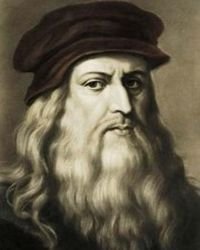
)
WikiImages / Pixabay
Leonardo da Vinci is often seen as one of the first true scientists. Because of this, people believe he must have been a rationalist, a materialist and an atheist. While it is true that Leonardo was incredibly vocal and scathing concerning the Church’s corruption in his day, it has been noted that he held strong religious beliefs. Certain researchers claim, however, that they have found compelling evidence that some of those beliefs fly in the face of accepted Christianity and that Leonardo da Vinci was in fact an active heretic.
Leonardo’s life was in danger in 15th century Italy simply because he was a vegetarian, as shocking that might seem in today’s society. The prevailing religious rationale at the time held that since God had given mankind dominion over all animals, it was considered a serious affront to refrain from eating the flesh of animals. Vegetarian food was known as “the Devil’s banquet” and the Church was quite prepared to have vegetarians burnt at the stake for heresy. Leonardo was somehow able to get away with this, as well as other minor and even much more extreme and shocking forms of heresy.
Being naturally left-handed, Leonardo da Vinci taught himself to be ambidextrous, and often committed his more private or heretical writings to paper in a manner known as mirror writing. Even though just being left-handed was seen as another sign of the Devil at that time, once again Leonardo was somehow able to escape punishment for refusing to stop writing in the way that came naturally.
At age 24 he did have a potentially serious brush with the law when he and some companions were arrested for homosexual activities. Despite the extreme seriousness of the situation, Leonardo and his companions were freed because influential people came to their aid – this could explain the secret as to why Leonardo da Vinci so blithely disregarded society’s requirements and proprieties in so many other ways.

Buckingham Palace Exhibits Rare da Vinci
Anatomy Studies 300 Years Ahead of His Time
| ITALY Magazine
One of the most entrenched doctrines of the Church at the time was the prohibition against the dissection of dead bodies on the grounds that not only was it blasphemous to destroy God’s handiwork, but the bodies had to remain intact for the Day of Judgement when they would be resurrected. Leonardo was known to have essentially flaunted his nocturnal activities in the charnel houses, where he pursued his anatomical research using the corpses of unfortunate paupers. The Church had awarded him a special permit for his work and even though the Church later revoked the permit, he was never prosecuted for the many nights he spent in grim work among the decomposing cadavers. Amazingly, he was again simply able to get away with it.
Leonardo’s anti-Church views have been taken for granted by his biographers for the most part, yet some manifestations of his dangerously idiosyncratic views on life were, by any standard, incredibly thought-provoking. Even though he accepted multiple commissions to create major religious works of art (such as his famous The Last Supper) his personal notebooks contain unmistakable references to what he believed to be the corruption, venality and even superstitious stupidity (his words, not mine) of the clergy. These thoughts might be indicative of his beliefs going considerably deeper than mere anti-clericalism. Perhaps, as suggested by various pieces of evidence, he was not an atheist, nor even an agnostic, but an active heretic whose personal beliefs still have the power to shock.
Faked Face?
British investigators Clive Prince and Lynn Picknett became increasingly convinced that Leonardo Da Vinci had actually faked the alleged holy relic the Shroud of Turin, while doing background research on the relic in the late 1980’s. They believed the Maestro used a primitive, but ingenious, form of photography. If in fact Leonardo had created this faked image, what were his reasons/motives for doing so?
Turin-based researcher Maria Consolata Corti also believes that da Vinci had a hand in the creation of Christianity’s most controversial (and precious) relic. However, Corti believes he faked it because of his extreme reverence for Jesus Christ, a notion that Picknett and Prince disagree with. Picknett and Prince say 'No one but a convinced heretic would have dared to fake Jesus' face and holy, redemptive blood, especially in those days. No true believer would have even contemplated committing such a heinous crime: only someone with no fear for his immortal soul would have even attempted this extraordinarily blasphemous act.' It is believed by both Corti and Picknett and Prince, that Leonardo used his own face as Jesus’ on the allegedly miraculous cloth. If this is true, then it does begin to seem more like a joke, or even a deliberate sacrilege, than evidence of deep piety on the part of Leonardo.
Picknett and Prince claim their research has led them to conclude that the image of the face (which they claim is Leonardo’s own face) was created at a different time than the rest of the body. (It is their belief the body is that of an unknown corpse.) Would this two-part process be enough to explain the anomaly of the apparently severed head?
Picknett and Prince observed that the neck ends in a straight line and that the area underneath disappears into nothing for a few inches before suddenly reappearing again at the upper chest. This observation was double checked and confirmed by British computer buff Andy Haveland-Robinson, who was able to conclusively show that the image fell away to nothing beneath what appears to be a demarcation line under the neck. Surely, however, a genius such as Leonardo da Vinci would have been able to eliminate or hide such a mistake?
But what if, as those authors suggest, this was done deliberately by Leonardo? An encoded heretical message for all to see, rather than a mistake? Was Leonardo trying to say something, that given the time and prevailing attitudes, he could not have possibly stated openly? There is only character in the New Testament who was beheaded: John the Baptist. Picknett and Prince had noted clear evidence in Leonardo’s paintings and other works of art of the artist's extreme devotion to John the Baptist. Was Leonardo perhaps trying to indicate that someone who had been beheaded was somehow morally and/or spiritually superior to one who was crucified?
Leonardo and John the Baptist
Leonardo’s only surviving sculpture is a joint work with Gianni di Rustici, a notorious alchemist and occultist, depicts John the Baptist, and currently resides over an entrance to the Baptistery in Florence. When Leonardo da Vinci died in France in 1519, there were only two paintings present at his deathbed. The first was the Mona Lisa and the second his strange, dark painting of a young John the Baptist, whose enigmatic smile bears a striking resemblance to that of the Mona Lisa.
In the painting, John is pointing upwards with his right forefinger, a symbol that was common in many religious paintings of the time, and which referred to the Holy Spirit. Leonardo, however, seemed to give it a meaning of his own. Close examination of Leonardo’s works, show that to him, that gesture was always associated with John the Baptist. Picknett and Prince refer to this as Leonardo’s ‘John gesture.'
This gesture is a repeated and recurrent pattern in Leonardo’s work. In his unfinished Adoration of the Magi, begun approximately the same time as Picknett and Prince claim he faked the Shroud of Turin, the theme is usually taken exactly as it seems. Based on the title of the work you would expect to see a traditional version: the worship of the infant Jesus and the Virgin Mary by the three wise men who kneel before them with their traditional gifts. However, in Leonardo da Vinci’s version, a closer inspection reveals a very different tone, the wise men are presenting gifts of frankincense and myrrh, but there is no gold. As gold was believed to symbolize perfection and kingship in the time, perhaps it is significant that it appears that Jesus is not being recognized as perfect or royal.
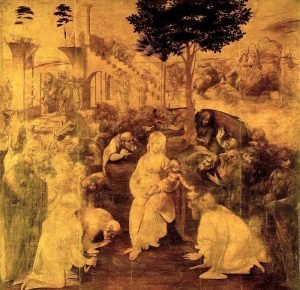
Adoration of the Magi
by Leonardo da Vinci
Courtesy of LeonardodaVinci.net
On closer inspection there are even more peculiarities. The group of worshippers around Jesus and Mary appear horribly decrepit, almost like walking corpses clawing at them. In the background is another group, younger and healthier, who appear to be worshipping a tree, a carob tree in fact. The carob tree in traditional religious iconography is the symbol of John the Baptist and as if to reinforce the point, one of the figures near the tree, a young man, can been making the ‘John gesture.’ Could Leonardo really be making a blasphemous statement in favour of John the Baptist? Further examination of the work reveals a figure in the bottom right-hand corner, which art historians believe is Leonardo da Vinci himself, turning away violently from Jesus and his mother.
The 1501 work The Virgin and Child with St. Anne was based on the preliminary drawing, also known as a cartoon. At first glance this famous work is a beautiful pious depiction of the Virgin and the infant Jesus, where Jesus is blessing a young John, who in turn is leaning against the knees of St. Anne, who is Mary’s own mother.
But once again, upon closer inspection of the scene, curious details emerge. St. Anne looks suspiciously male and her enormous hand is making the ‘John gesture’ above the child’s head while she appears to staring in a threatening manner into Mary’s serenely oblivious face. The image of Jesus himself appears to be steadying John’s head, not for a blessing, but as if to strike a blow.
In the finished painting, The Virgin and Child with St. Anne, the air of threat to John is also apparent, although the final product bears little resemblance to the first draft. John has been replaced by a lamb, which Jesus is holding by the ears and is looking at his mother as if for approval. It could also be interpreted that one of the infant’s legs appears to cut across the lamb’s neck as if severing or smothering it…
Is this an accurate interpretation of Leonardo da Vinci’s major works? This heretical idea of a Jesus that somehow menaced John the Baptist? What might appear to a few as Jesus pulling the ears off the lamb may be seen by others as a normal child-like, albeit somewhat rough, way of merely playing with the lamb.
However, the hints about heretical views and Johannite (pro-John the Baptist) beliefs are piling up. So what other evidence did Leonardo leave behind that indicates his view, that most would believe was totally blasphemous, of Jesus Christ’s relationship with John the Baptist?
Originally sourced from:
TempleofMysteries.com
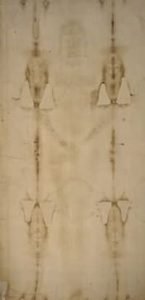
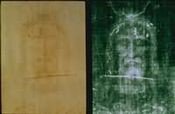
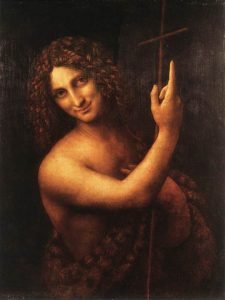
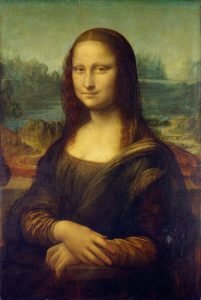
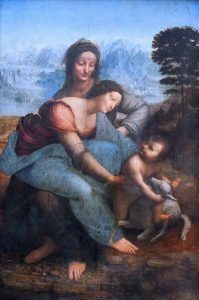

So appealing and amazing mate
Congratulations @ancientknowled3! You have completed the following achievement on the Steem blockchain and have been rewarded with new badge(s) :
Click on the badge to view your Board of Honor.
If you no longer want to receive notifications, reply to this comment with the word
STOPDo not miss the last post from @steemitboard:
Hi @ancientknowled3!
Your post was upvoted by @steem-ua, new Steem dApp, using UserAuthority for algorithmic post curation!
Your UA account score is currently 0.000 which ranks you at #1121496 across all Steem accounts.
Your rank has not changed in the last three days.
In our last Algorithmic Curation Round, consisting of 305 contributions, your post is ranked at #281.
Evaluation of your UA score:
Feel free to join our @steem-ua Discord server